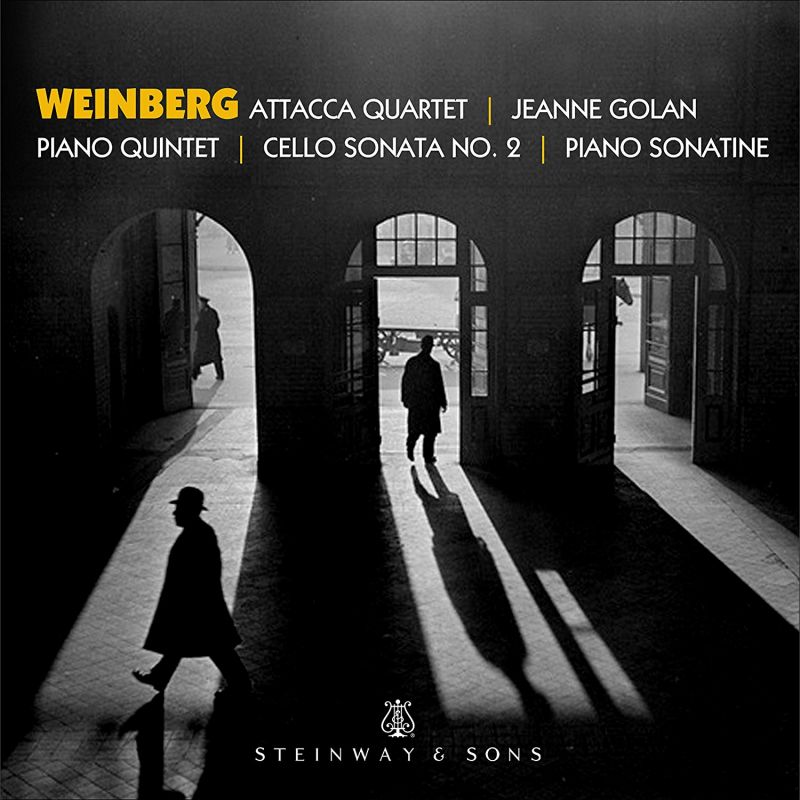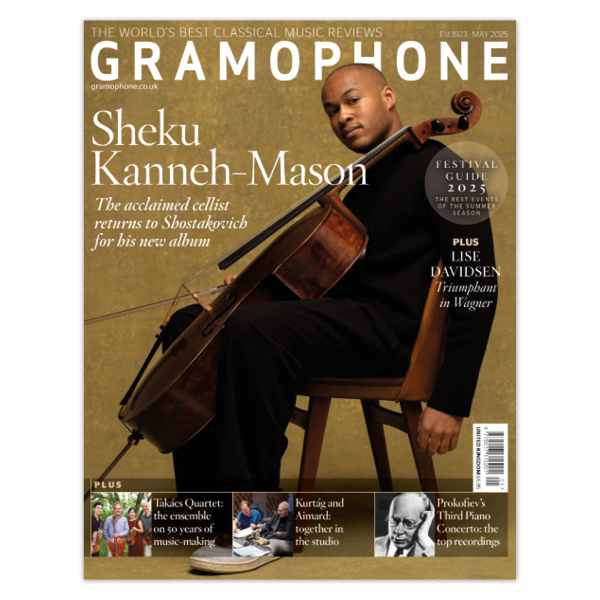WEINBERG Piano Quintet. Cello Sonata No 2. Piano Sonatine
View record and artist detailsRecord and Artist Details
Composer or Director: Mieczyslaw Weinberg
Genre:
Chamber
Label: Steinway & Sons
Magazine Review Date: 07/2018
Media Format: CD or Download
Media Runtime: 0
Mastering:
DDD
Catalogue Number: 30072

Tracks:
| Composition | Artist Credit |
|---|---|
| Quintet for Piano and Strings |
Mieczyslaw Weinberg, Composer
Attacca Quartet Jeanne Golan, Piano Mieczyslaw Weinberg, Composer |
| Sonatine for Piano |
Mieczyslaw Weinberg, Composer
Jeanne Golan, Piano Mieczyslaw Weinberg, Composer |
| Sonata for Cello and Piano No. 2 |
Mieczyslaw Weinberg, Composer
Andrew Yee, Cello Jeanne Golan, Piano Mieczyslaw Weinberg, Composer |
Author: David Fanning
Jeanne Golan and the young members of the Attacca Quartet offer one of the most spacious accounts, at over 47 minutes, and I can see where they are aiming. Just because the composer himself and almost all others place the emphasis on drive and drama does not mean that there is no scope for taking more time to stop and admire the view. Introducing so much detailed phrasing and shaping into the rhetorical slow movement certainly gives evidence of much thought and preparation. Still, I cannot say it entirely works. The outer movements lack forward impulse and urgency, and the sense of direction in the two slithery scherzos is again too vague. Curiously for a recording made in New York’s Steinway Hall, the piano itself sounds bulky in the bass and fluffy in the treble, while the close balance and dry acoustic add to the sense of congestion.
Just as curiously, the sound picture brightens up considerably for the Sonatine, in which Golan’s silvery touch teases out the subcutaneous strands of klezmer in the first movement and finds an effectively capricious solution to the problem of the oddly truncated finale. The Cello Sonata moves persuasively from searching to trenchancy, earning a place of merit not far behind Chaushian and Sudbin or Weinberg and Alla Vassilieva (Rostropovich’s first pupil and later his assistant at the Moscow Conservatory).
Discover the world's largest classical music catalogue with Presto Music.

Gramophone Digital Club
- Digital Edition
- Digital Archive
- Reviews Database
- Full website access
From £8.75 / month
Subscribe
Gramophone Full Club
- Print Edition
- Digital Edition
- Digital Archive
- Reviews Database
- Full website access
From £11.00 / month
Subscribe
If you are a library, university or other organisation that would be interested in an institutional subscription to Gramophone please click here for further information.




